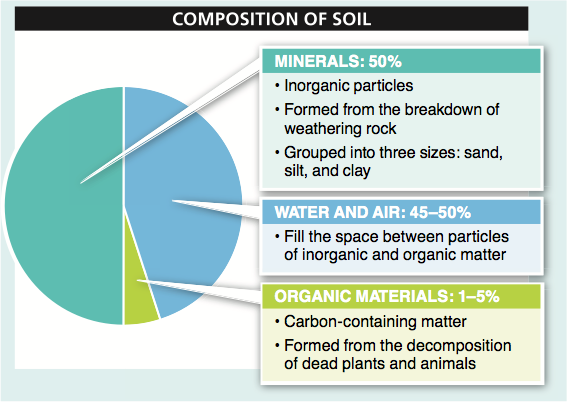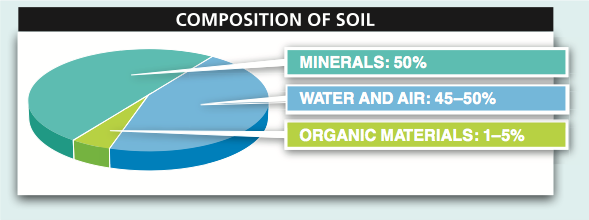
Chapter 17. Chapter 17 Graphic Content
Introduction

Instructions
Review the information provided in the graph to answer each question below.
After submitting your answer, you will be provided feedback to check if your response is correct.
(This activity contains 6 questions.)
1.

1. What is the purpose of this pie chart?
2.

2. What is the source of the data in the chart? What is an assumption underlying this presentation of data?
3.

3. Are the data presented in the chart valid for all types of soil? How might such comprehensive data be presented?
4.

4. Bar graphs can present not just an average value for data, but also an estimate of variation. Can that be done with a pie chart? How?
5.

5. What is the benefit to presenting these data as a pie chart rather than a bar graph with three bars? If they were presented as a bar graph, what would the axis labels be?
6.

6. Pie charts often are shown in three dimensions, as shown here. In this chart, the “water and air” portion is rotated toward the front, causing more blue coloring than turquoise coloring to be visible. Does that mean the blue “slice” represents a larger number than the turquoise “slice”? Could this method of data presentation be used to mislead viewers?
Activity results are being submitted...